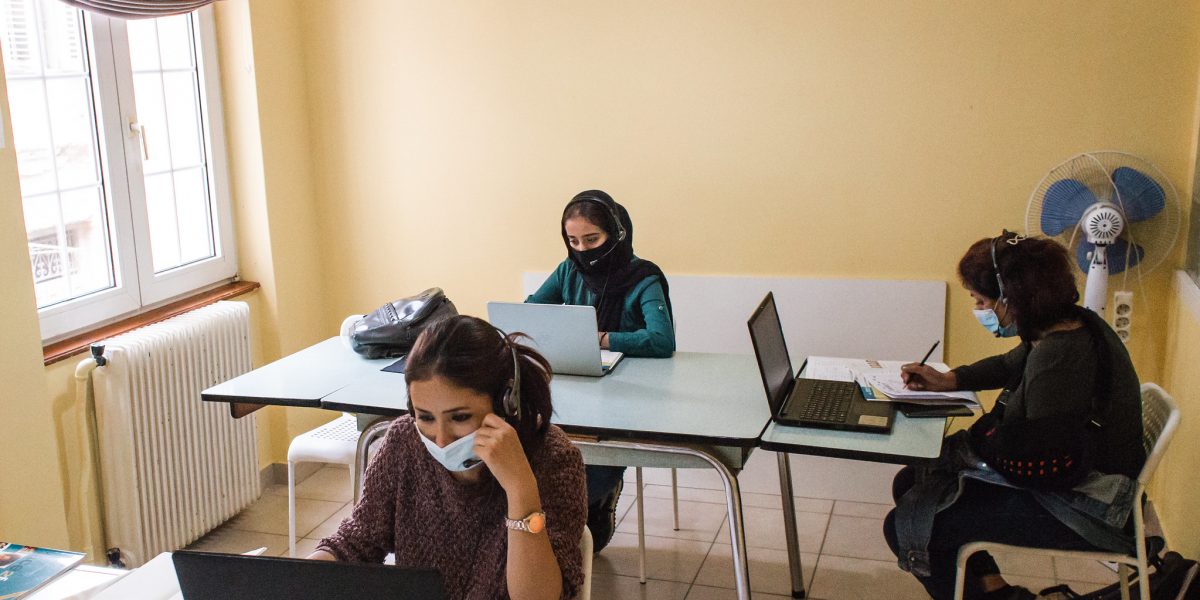2020: when everything changed. Or not…
17 December 2020|JRS Europe

At the end of 2019, after a long political stalemate due to the European elections and renewed EU institutions, JRS Europe was looking forward to seeing if the new European Commission would get the Member States to finally work together on a ‘fresh start’ in the EU asylum and migration policy.
We were calling for a new narrative about refugees and migrants, one that would emphasise their positive potential for our societies. We were advocating for the correct implementation of existing EU legislation, for the expansion of safe and legal pathways to Europe, and for a true mechanism to share the responsibility to protect refugees among European states. And then Covid-19 came and changed everything… Or not?
Covid-19: the magnifying glass for asylum systems’ flaws
The Covid-19 pandemic hit hardest the most vulnerable in our societies, including asylum-seekers and refugees. In the past months, JRS Europe and our partners have examined the impact of Covid-19 related measures on the reception of asylum seekers and on administrative detention in several EU countries. The emerging picture is dramatic though not surprising: Covid-19 has magnified and aggravated the existing flaws of asylum systems in Europe.
How can people exercise physical distancing and respect the necessary hygienic measures in overcrowded reception facilities? How can we ask people to ‘stay home’ when, in many EU countries, asylum seekers are not getting the reception place they have the right to according to EU legislation? How to justify the detention of people, when enforcing return, the purpose that it is supposed to serve, is practically impossible? And how to ensure proper legal and psycho-social assistance in detention centres when external visitors are not allowed in and detainees’ possibilities for communication with the outside world are extremely limited?
Also unsurprisingly, we found that the response to the pandemic was faster and better where systems were already performing better, with sufficient reception conditions organised with a clear chain of responsibility and established coordination structures.
Most telling, our examination of the Covid-19 impact on European asylum systems confirms that, despite twenty year of harmonisation efforts, asylum and receptions systems remain extremely different across Europe and in many cases, current practices simply violate the common European legislation.
EU Pact on Asylum and Migration: the (not-so) “fresh start”
Although delayed by the pandemic, the European Commission finally launched the new EU Pact on Asylum and Migration in September. The European Commission’s narrative is refreshing at first sight: the effort to ‘normalise’ the discussion on migration and to recognise the positive contributions of migrants in our societies is a welcomed change.
However, the hopes for a true “fresh start” were short-lived. Essentially, the Pact is a repackaging of worrying ideas from the past with a strong focus on blocking and filtering people at the EU external borders based on the assumption that the majority of those arriving are not in need of protection. Cooperation with third countries to prevent arrivals and admit returnees, mandatory border procedures possibly resulting in expanded possibilities to detain migrants, and a strong focus on enforcing returns are the Pact’s foundations.
Moreover, the Pact does not truly offer a solution to ease the workload for the Member States at the EU external borders where most people arrive. On the contrary, rather than ensuring that every EU Member State shows solidarity and receives asylum seekers by means of relocation, the proposed system allows States to choose to sponsor returns.
The Pact does include some improvements to the current legislation such as an enlarged definition of the family during the determination of the responsible Member State. However, such improvements are completely overshadowed by the risks of aggravating situations of undignified reception – in truth detention – conditions at the external border of the EU, such as on the Greek islands.
2021: Time To Change Course
New year, new opportunities! Negotiations on the Pact have not really started yet. Meanwhile, the European Commission also published the new Action Plan on Integration and Inclusion that features positive resolutions such as the intention to start working on integration as soon as people arrive and to promote models of reception for asylum seekers that allow for autonomous living as opposed to collective reception centres. It is never too late for a change of course to bring protection back to the core of the Common European Asylum System.
In 2021, JRS will continue advocating for:
- A principled choice for expanding safe and legal pathways for refugees to seek protection in Europe.
- The full implementation of the current European legislation on asylum. Although not perfect, the current Common European Asylum System, if correctly implemented, would provide a considerable improvement in the conditions of asylum seekers throughout the EU.
- Small-scale reception models that allow for autonomous living and adapted accompaniment to support asylum-seekers and refugees to start integrating in our society as soon as they arrive.
- A true system of responsibility sharing among European Member States that takes into consideration asylum-seekers’ ambitions and aspirations when determining which State should examine their claim.
- The promotion of a narrative to encourage European citizens to keep an open mind in the encounter with people from different cultures and background so that such encounter can be mutually enriching and build stronger and inclusive communities.

